The presence of the father in the kangaroo method
La presencia del padre en el método canguru
A presença do pai no método canguru
Thais Rosental Gabriel Lopes; Viviane Euzébia Pereira Santos; Jovanka Bittencourt Leite de Carvalho
Abstract
Keywords
Resumen
Palabras clave
Resumo
Objetivo: Refletir sobre a vivência do pai junto ao filho prematuro no Método Canguru sob o referencial de Merleau-Ponty.
Método: Estudo teórico-reflexivo baseado na Fenomenologia da Percepção e do Comportamento proposto por Merleau-Ponty e literatura pertinente.
Resultados: Vivenciar a prematuridade junto ao filho no Método Canguru propicia ao pai se reconhecer como ser-no-mundo. Suas intenções acerca do cuidado são demonstradas pelo contato pele a pele e do cuidado inerente ao recém-nascido prematuro. A partir das experiências vividas, possibilita ao pai exercer sua paternidade de forma plena e significativa.
Conclusão e Implicações para a prática: Compreender as formas de ser, agir e reagir do pai no Método Canguru, possibilita a reflexão de suas atitudes como cuidador e aproxima-o do recém-nascido prematuro. Dessa forma, é possível edificar os comportamentos entre pai e filho no intuito de vinculá-los afetivamente e permitir os cuidados inerentes à prematuridade. Compreender o comportamento paterno nos cuidados ao filho prematuro no Método Canguru e suas percepções acerca do cuidado no período neonatal, pode beneficiar a práxis de enfermagem na perspectiva de promoção à saúde neonatal, bem como na prevenção de agravos no que tange à morbidade e mortalidade infantil.
Palavras-chave
Referencias
1 World Health Organization (WHO). Recommendations on interventions to improve preterm birth outcomes. Geneva: World Health Organization; 2015.
2 World Health Organization (WHO). Levels and trends in child mortality 2015. Geneva: World Health Organization; 2015.
3 Lanata CF, Fischer-Walker CL, Olascoaga AC, Torres CX, Aryee MJ, Black RE; Child Health Epidemiology Reference Group of the World Health Organization and UNICEF. Global causes of diarrheal disease mortality in children< 5 years of age: a systematic review. PLoS One [Internet]. 2013 Sep; [cited 2018 Jul 18]; 8(9):e72788. Available from:
4 Aires LCP, Santos EVKA, Costa R, Borck M, Custódio ZAO. Seguimento do bebê na atenção básica: interface com a terceira etapa do método canguru. Rev Gaúcha Enferm [Internet]. 2015;36(no.spe):224-32. Available from:
5 Zampieri MFM, Guesser JC, Buendgens BB, Junckes JM, Rodrigues IG. O significado de ser pai na ótica de casais grávidos: limitações e facilidades. Rev Eletr Enferm [Internet]. 2012 Jul/Sep; [cited 2018 Jul 18]; 14(3):483-93. Available from:
6 Jesus NC, Vieira BDG, Alves VH, Rodrigues DP, Souza RMP, Paiva ED. The experience of the kangaroo method: the perception of the father.J Nurs UFPE On Line (Recife) [Internet]. 2015 Jul; [cited 2018 Jul 18]; 9(7):8542-50. Available from:
7 Silva SO, Budô MLD, Silva MM. Concepções e Práticas de Cuidado na Visão de Homens. Texto Contexto Enferm (Florianópolis) [Internet]. 2013 Apr/Jun; [cited 2018 Jul 14]; 22(2):389-96. Available from:
8 Piccinini CA, Levandowski DC, Gomes AG, Lindenmeyer D, Lopes RS. Expectativas e sentimentos de pais em relação ao bebê durante a gestação. Estud Psicol (Campinas) [Internet]. 2009 Jul/Sep; [cited 2018 Jul 18]; 26(3):373-82. Available from:
9 Souza PM, Ramos MS, Pontes FARP, Silva SSC. Coparentalidade: um estudo de revisão sistemática da Literatura. Estilos Clín (São Paulo) [Internet]. 2016 Sep/Dec; [cited 2018 Jul 14]; 21(3):700-20. Available from:
10 Machado MED, Santos ND, Christoffel MM. (Re) cognizing the masculine participation in kangaroo method: an interface with the assisten. Ciênc Cuidado Saúde [Internet]. 2013 Jul/Sep; [cited 2018 Jul 13]; 12(3):461-8. Available from:
11 Barcellos AA, Zani AV. Experience of the father the son’s premature birth: integrative review. J Health Biol Sci [Internet]. 2017 Jun; [cited 2018 Jul 14]; 5(3):277-85. Available from:
12 Merleau-Ponty M. Fenomenologia da percepção. 3a ed. São Paulo: Martins Fontes; 2006.
13 Merleau-Ponty M. A Estrutura do comportamento. 3a ed. São Paulo: Martins Fontes ; 2006.
14 Sá Neto JA, Rodrigues BMRD. Technology as a foundation of neonatal care. Texto Contexto Enferm [Internet]. 2010 Apr/Jun; [cited 2018 Jul 15]; 19(2):372-7. Available from:
15 Feeley N, Waitzer E, Sherrard K, Boisvert L, Zelkowitz . Father´s perceptions of the barriers and facilitators to their involvement with their newborn hospitalized in the neonatal intensive care unit. J Clin Nurs [Internet]. 2013 Feb; [cited 2018 Jul 14]; 33(3-4):521-30. Available from:
16 Toma TS. Da intuição às políticas públicas: a jornada para incorporação do Método Canguru no cuidado ao recém-nascido de baixo peso. BIS Bol Inst Saúde [Internet]. 2012 Jul; [cited 2018 Jul 15]; 13(3):231-8. Available from:
17 Organización Mundial de la Salud (OMS). Departamento de Salud Reproductiva e Investigaciones Conexas. Método Madre Canguro: guía práctica. Ginebra: Organización Mundial de la Salud; 2003. 62 p.
Submitted date:
10/12/2018
Accepted date:
27/03/2019



